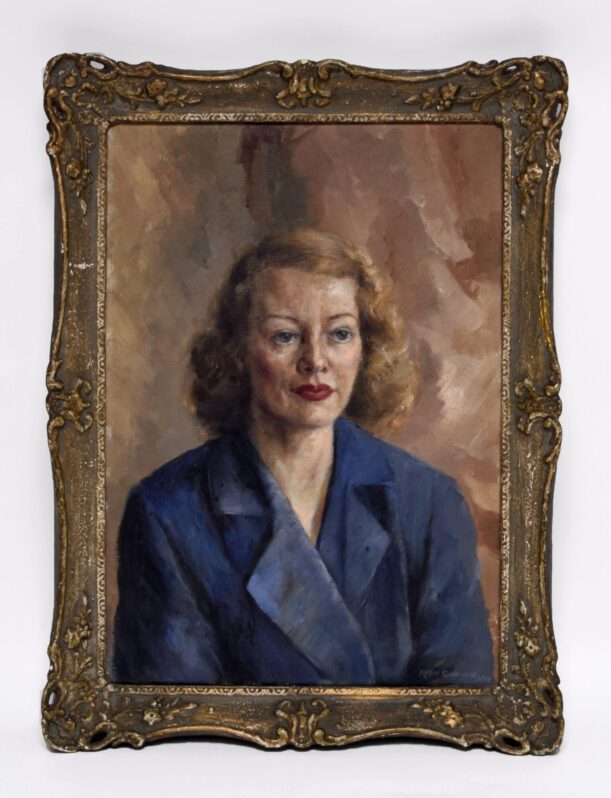Robin Goodwin
b.1909-d.1997
Project notes page 3_

Agnes May died in Worthing at the end of 1974. Her will is an unusually detailed document, an inventory of objects carefully marked out for their new owners: a candlestick for one; some carpet runners for another; a wastepaper basket for a third. There are precise sums of money, ranging from £25 to £200, reserved for her doctor, the porter at the apartment block where she had been living, a secretary in her solicitors' office.
Two other items catch my attention: "My Oil painting half length Portrait of a Lady in blue dress by Rolin [sic] Goodwin" and "The water colour Portrait in silver frame in my lounge". If I can find one of these portraits I will at last see what she looked like.
There are three chief executors of her will: Mrs Vera Wall, to whom she left this Portrait of a Lady in Blue dress, and who lived near her in Worthing; Mrs Patricia Ellegard who came from London; and Agnes May's solicitor. I was able to track down the solicitor in a nursing home, but he was unable to help. To find out something of Vera Wall, I decided to go to Worthing.
End of the Affair
This article is more than 20 years old
In 1926 Fraser Holroyd caused a scandal when he left his family for a mercurial young woman who later disappeared from his life. Seventy years on, the biographer Michael Holroyd resolved to track down the truth about his grandfather's elusive femme fatale and unearthed a remarkable story
https://www.theguardian.com/books/2004/feb/21/featuresreviews.guardianreview?CMP=share_btn_url
MichaelHolroyd’s two-volume Augustus John (1974, 1975) is a study of the painter’s personal as well as artistic life. He later revisited both of the latter biographies and published substantially revised versions of each: Lytton Strachey: The New Biography (1994) and Augustus John.
Searching for the "Lady in the frame" Agness May, after writing
'BASIL STREET BLUES' piecesing together the complicated, enigmatic, scandalous and contradictory fragments of Michael Holroyd's own family history.
Agnes May arrived here in late 1965 or early 1966 and lived in one of the maisonettes at The Towers in Grand Avenue. This is a tall, ornate building next to the front with fine views of the sea. It is a typical example of imposing sea-front architecture and looks expensive - probably too expensive for Agnes May who, after two or three years, moved to a less grand, red-brick apartment building, Downview Court in Boundary Road. These are small, comfortable 1930s flats with well-kept gardens but no sea views. After another two or three years, she moved again, this time to a more modest building of the same period, Arundel Court in Lansdowne Road, where she remained for the last four or five years of her life. Agnes May was evidently in retreat.
When I got back to London, having been unable to trace Vera Wall, I went in search of her half-length portrait instead. Robin Goodwin is an elusive painter, though his name is familiar to me. This is because, I remember, in the late 1940s he rented Augustus John's studio in Tite Street. He had begun his professional career at the end of the second world war, taught for a time at the Slade School of Fine Art, did commissioned portraits for the money and sea pictures for love. He almost certainly painted Agnes May in the late 1940s or early 1950s, after which time he turned increasingly to marine subjects. The portrait, which was probably commissioned by an admirer, is as much a signpost in her life as her Lalique glass, a present from my grandfather in the 1920s, but I could not find where it pointed, its provenance or whereabouts.
So I switch my attention to the second picture, described in Agnes May's will as a "water colour Portrait in silver frame". This had been left to the third executor, Mrs Patricia Ellegard.

